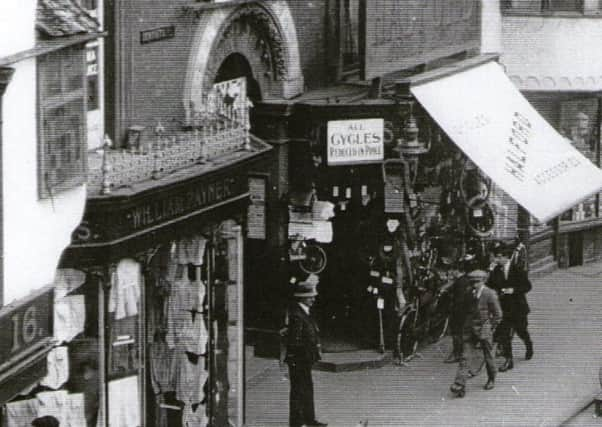Tales of Banbury town's Christmas past


In his youth a variety of small shops made up the main retail area of the town. Those who ran them believed that the true countdown to Christmas began in the fourteen days prior to December 25. It was in that concentrated period that window shopping afforded so much pleasure and many a Christmas motif caught the eye.
For Herbert, Christmas Eve had a special meaning, ‘bed early and stockings hung on the bed rail, to wake up in the morning and find them miraculously filled – an apple, nuts and sweets and maybe a sugar mouse and a small toy’. A moment of sheer joy was the occasion when the contents included a small metal milk cart along with a horse and some churns. This was when his imagination ran riot and he was the milkman out delivering the milk.
Advertisement
Hide AdAdvertisement
Hide AdHerbert joined the ranks of small choristers at St Mary’s Church. I wonder how many of my readers recall ‘Groggy’ the choirmaster who urged his flock not to eat nuts as they affected the breathing. A more cynical view of this was that his request was conditioned by a tradition honoured after the final service of Christmas Day when ‘Groggy’ would present each member of the choir with a bag of nuts! Clearly Herbert enjoyed singing the Christmas hymns. He had learnt the words at school and the rendering of them ‘set the pattern for the joys of Christmas’.
As the years rolled by, logged into Herbert’s memory was that later still on Christmas Eve he would be up in the Belfry at St Mary’s, pulling a rope, ringing in Christmas. Followed by a quick dash to St Paul’s Neithrop where his wife had reserved him a seat as the midnight communion service attracted a near full congregation.
Elsewhere in the town there were haunts which had happy memories for those for whom no Christmas was complete without a visit to the cinema. Between 1907 and 1923 the Palace Theatre in the Market Place was known as Blinkhorns Picture House. It was run by Thomas and his family. An additional attraction was a popular café where people could linger over a cuppa.
In the Banbury Guardian issue of for November 11, 1986 the seasonal focus was on a town lit up for Christmas. The photographer of the day decided that the best view of the Bridge Street illuminations was from the Town Hall. Several hundred people were present to hear Lady Saye and Sele of Broughton Castle issue the order ‘let there be light’. However few amongst those present would have realised the cost implications. Stephen Spencer (Littlewoods manger) and his ‘Light up Banbury’ Committee had raised most of the £18,500. No wonder Lady Saye and Sale remarked that ‘the town gets a sparkle which means more fame and more trade’. The following year public awareness was improved by the publication of a map reproduced courtesy of Bankier Sloan. This revealed the extent by which the lit up zone had grown since the previous Christmas. Banbury had come a long way when in the late 1960s a headline in the Banbury Advertiser announced ‘No Christmas Lights for Banbury’. The only form of decorative lighting was the floodlighting of the Town Hall at a cost of £110.